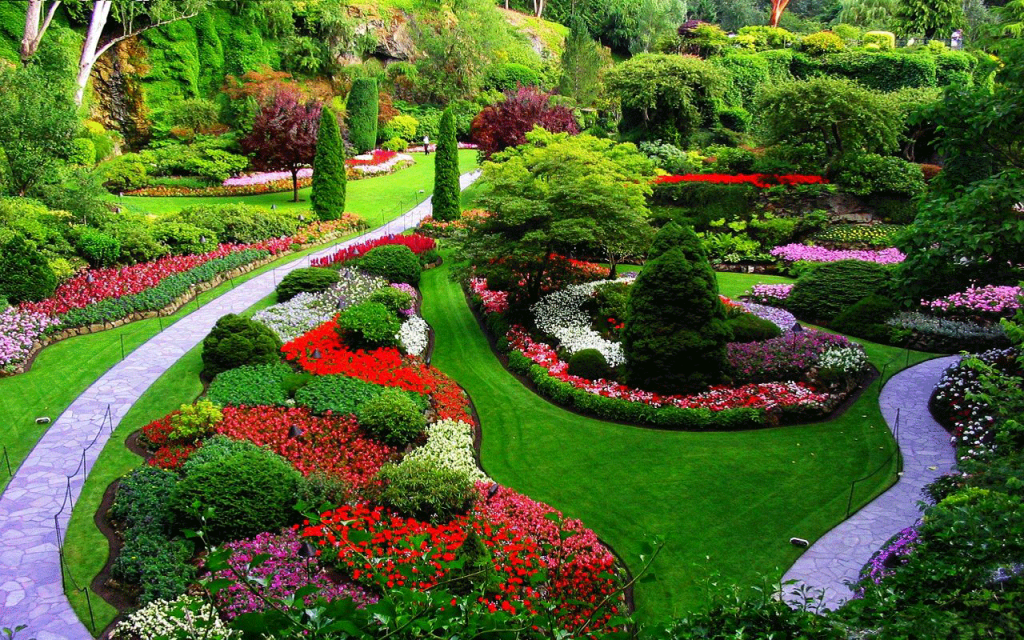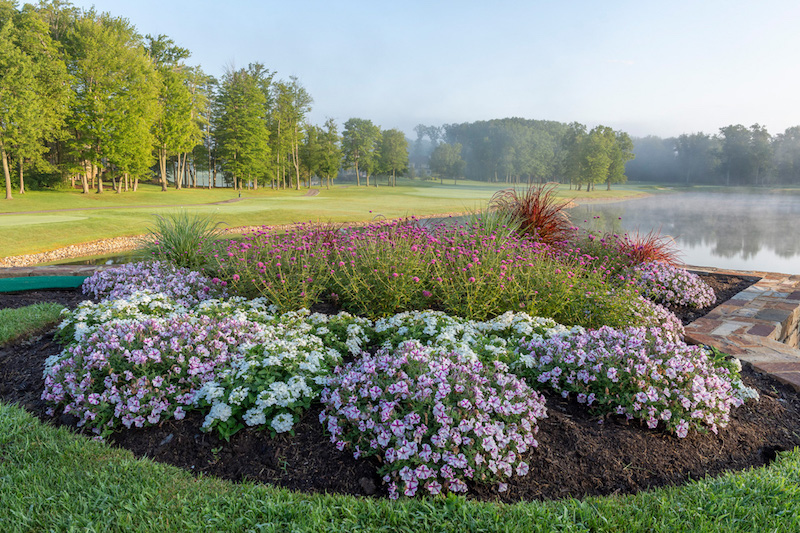What Does Hilton Head Landscapes Do?
What Does Hilton Head Landscapes Do?
Blog Article
Hilton Head Landscapes Can Be Fun For Everyone
Table of ContentsAll about Hilton Head LandscapesThe Buzz on Hilton Head LandscapesSee This Report on Hilton Head LandscapesHilton Head Landscapes Things To Know Before You BuyLittle Known Questions About Hilton Head Landscapes.The smart Trick of Hilton Head Landscapes That Nobody is DiscussingFascination About Hilton Head LandscapesSee This Report on Hilton Head Landscapes
Form compatibility is also a significant element of unity in designone or more noticeably various types benefit contrast and focus, yet typically all other types need to have some resemblances for a merged appearance. Appearance describes just how rugged or fine the surface area of the plant or hardscape product really feels and/or looks.
Instances of plants with rugged structure consist of philodendrons, agaves, bromeliads, hollies, palms, and hydrangeas. Qualities that develop fine appearance consist of small vegetation; thin, strappy leaves (yards) or tall, slim stems; small, dense branches and tiny branches; long stems (vines); and tiny, fragile blossoms.
Hilton Head Landscapes Fundamentals Explained
Most plants are average appearance, in that they can not be defined as having either crude or great appearance. Medium-textured plants act as a history to web link and link the rugged- and fine-textured plants.

To make an area feel smaller sized, put the coarse structures along the external perimeter and the great structures closest to the visitor. The detail of the rugged appearance makes the plants show up closer and makes the room really feel smaller sized. The perceived texture of plants can additionally transform with the range from the plant.
The Facts About Hilton Head Landscapes Revealed
Vibrant shades raise the comparison and make the structure appear coarser, while low-key shades can flatten appearance. Hardscape with a rugged texturesuch as very harsh rocks and vibrant, huge timberstends to make all plant product appear more average textured. Designers frequently develop a texture research (Figure 8) on paper to aid determine the plan of plant materials.
Color in plant product and hardscape adds interest and variety to the landscape. Shade is the most conspicuous aspect in the landscape and is normally the focus of most home owners; however, it is additionally the most momentary component, usually lasting only a few weeks a year for specific plants.
The Ultimate Guide To Hilton Head Landscapes
A simple description of the color wheel consists of the 3 primary colors of red, blue, and yellow; the three secondary colors (a mix of two primaries) of eco-friendly, orange, and violet; and six tertiary colors (a mix of one surrounding key and second shade), such as red-orange. Shade theory explains the relationship of colors to every various other and exactly how they should be utilized in a composition.

Similar (in some cases called harmonious) shade plans are any type of three to 5 shades that are surrounding on the color wheel, such as red, red-orange, orange, yellow-orange, and yellow, or blue, blue-violet, and violet (landscapers in bluffton sc). The colors relate to every other since they usually consist of 2 key shades blended to form a secondary and two tertiary colors, which suggests they share usual homes
They tend to have high contrast between them. The most common sets are violet and yellow, red and eco-friendly, and blue and orange. Complementary colors are typically located normally in flowers; a typical set is yellow and violet. Color is discovered in the flowers, foliage, bark, and fruit of plants.
Hilton Head Landscapes - Truths
Green vegetation in all its different tones is the dominant shade by quantity, but other colors catch focus a lot more easily because of their high comparison to the color environment-friendly. Shade is also discovered in buildings, rocks, pavers, timber, and furniture. The majority of colors in natural products, such as stone and timber, are usually soft and tend to be variations of brownish, tan, and light yellow.
Color is an important component for creating passion and range in the landscape. Shades have residential or commercial properties that can impact feelings, spatial perception, light high quality, equilibrium, and emphasis. One building of color is described family member to temperaturecolors show up to be cool or warm and can impact feelings or feelings. Amazing shades tend to be soothing and must be made use of in areas for relaxation and calmness.
Hilton Head Landscapes for Beginners
Great shades tend to decline and are perceived as being further away, making a room really feel larger. Shade can likewise be used to capture attention and direct views.
Brilliant yellow, which has the highest possible intensity, also has a high contrast with all various other shades (typically described as a "pop" of shade) and should be utilized moderately. A tiny quantity of intense shade has as much visual weight as a big quantity of an extra restrained or weaker color.
Similar (in some cases called unified) color pattern are any type of three to 5 shades that are adjacent on the color wheel, such as red, red-orange, orange, yellow-orange, and yellow, or blue, blue-violet, and violet. The shades belong per other due to the fact that they typically include two primaries mixed to form an additional and 2 tertiary shades, which means they share common homes.
See This Report about Hilton Head Landscapes
Complementary colors are usually located normally in flowers; a common set is yellow websites and violet. Shade is located in the flowers, vegetation, bark, and fruit of plants.
Green vegetation in all its various shades is the leading shade by quantity, but other shades catch interest quicker due to their high contrast to the shade green - bluffton landscaping - https://issuu.com/h1tnhdlndscps. Color is likewise found in structures, rocks, pavers, wood, and furnishings. Many shades in natural products, such as stone and timber, are normally low-key and have a tendency to be variants of brown, tan, and light yellow
The Greatest Guide To Hilton Head Landscapes
Shade is an essential component for creating rate of interest and variety in the landscape. Shades have homes that can influence emotions, spatial assumption, light quality, balance, and focus. One home of shade is described about temperaturecolors show up to be cool or warm and can influence feelings or sensations. Cool colors often tend to be relaxing and should be used in areas for leisure and tranquility.
Trendy shades often tend to decline and are regarded as being further away, making a room really feel larger. Color can also be used to record focus and direct sights - https://scriaoll-troos-gaerk.yolasite.com.
Brilliant yellow, which has the highest possible intensity, likewise has a high contrast with all various other shades (typically explained as a "pop" of shade) and should be used sparingly. A little quantity of extreme color has as much aesthetic weight as a huge amount of an extra suppressed or weak color.
Report this page